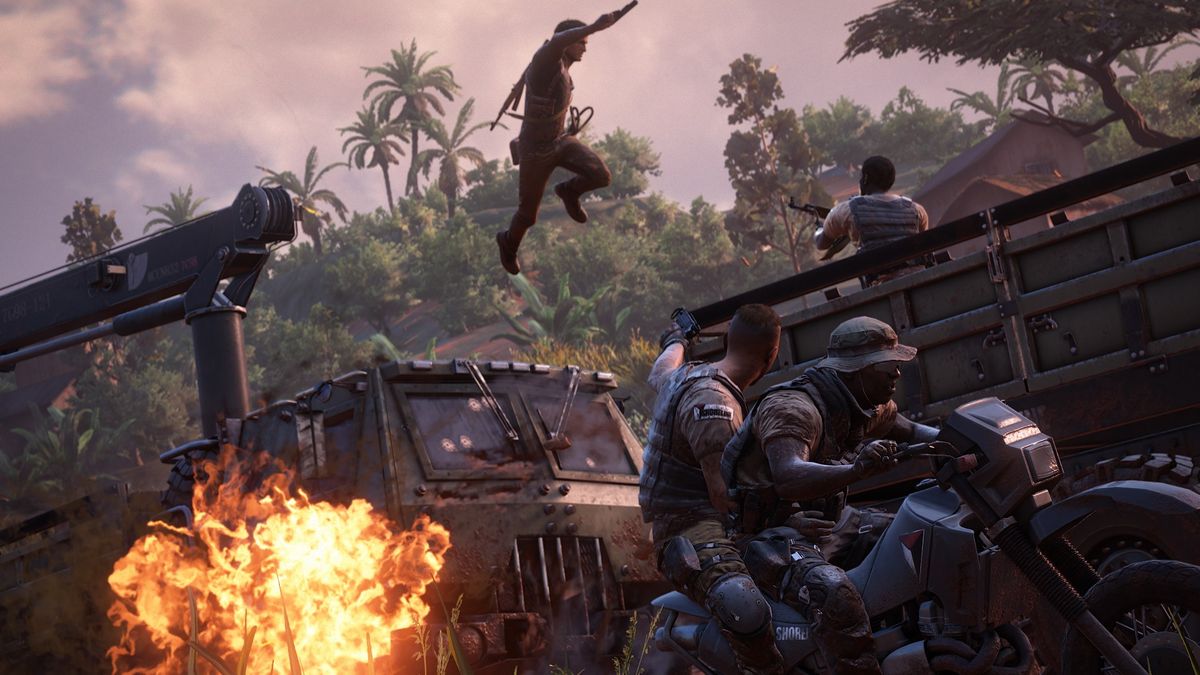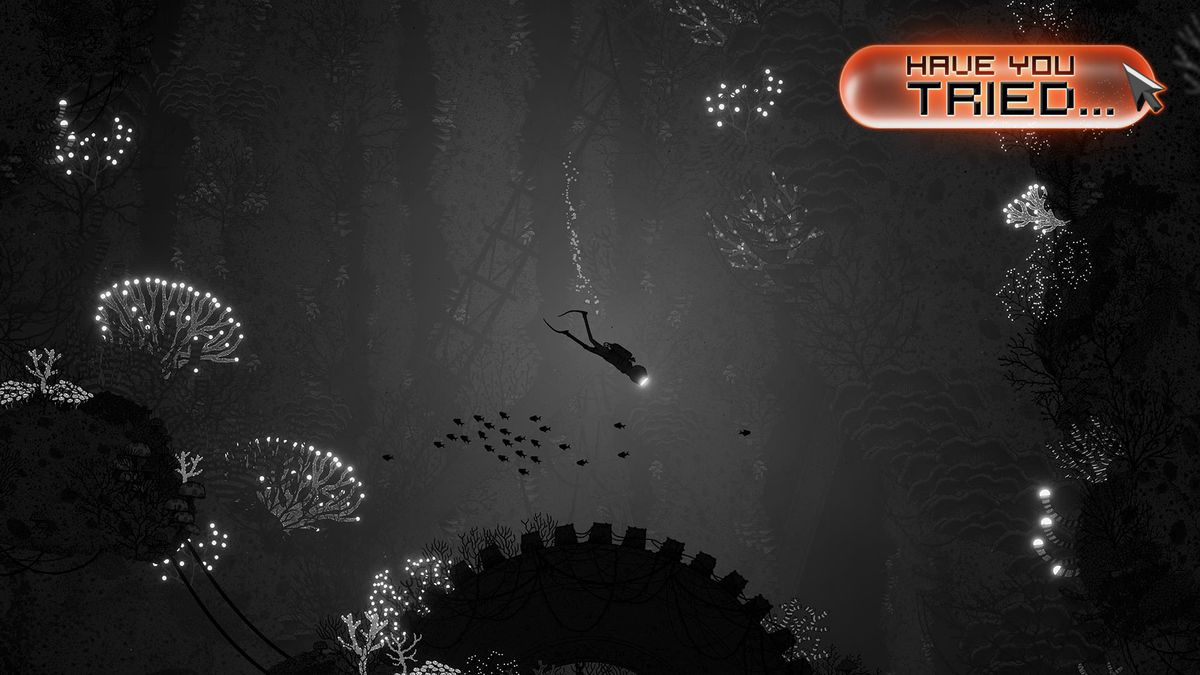The Mass Effect series helped define the previous console generation. It was a third-person cover shooter, for one thing, which is as close to the Xbox 360 heartland as you can get this side of Don Mattrick’s Kinect-packed basement. It also set a new high bar for storytelling and cinematic presentation, however, expanding the audience for video game sci-fi with characters that people really came to care about. This is the series that found the common ground between Gears of War and Final Fantasy and somehow knitted the two together without alienating fans of either.
Best BioWare Games, ranked

See where Mass Effect 2 ranked in our best BioWare games list. (opens in new tab)
It’s easy to forget how much of this started with the second game. Released right at the beginning of 2010, Mass Effect 2 marked a substantial step-up for the series’ production values and mainstream ambitions. All of the parts were there in the first Mass Effect, but the game was gawky, rough around the edges, and preoccupied with its own high concepts. Mass Effect 2 marked the moment when the series took its glasses off, swung its hair out and, like the debutante in the high school romantic comedy, stepped out as something bolder, more confident, and more traditionally sexy.
It did this by blowing up everyone you care about. As the Normandy SR-1 hunts the robotic geth on the fringes of the Terminus Systems, it’s set upon by a mysterious new enemy. The camera pans through the ship’s interior, from the galaxy map – one of the most iconic elements of the original game – following the Normandy’s crew as they go about the busy day-to-day operation of the ship.
A few minutes (and laser blasts) later and you’re sprinting through the exploding belly of the ship to save Joker, the pilot. There’s a brilliant stylistic flourish as you emerge onto the top deck of the ship and the music cuts out completely. The roof of the ship is gone and you find yourself looking up and out onto the dayside of an unknown planet, listening to Shepard’s heavy breathing. Everything is bathed in blue light, debris hanging in zero-G. Then you pass through the forcefield protecting Joker, the music kicks back in, and the palette becomes an angry orange once again. Joker is saved, but the ship lost – and Shepard with it. The camera slowly zooms out as Shepard struggles with multiple spacesuit breaches before tumbling to the planet below.

Cue titles. Mass Effect 2 has a hell of an opening, a run of big decisions that allows it to change as much about Mass Effect’s underlying structure as it wants. Shepard’s rebirth and the construction of a bigger, better Normandy mirrors the reconstruction of the series itself. Time is advanced by two years. Shepard is co-opted into Cerberus, a shadowy organisation free from the rigorous structures of the Alliance military or politics of the galactic Council. There’s a clear new threat – the insectoid Collectors, responsible for the first Normandy’s destruction – and a shopping list of new companions to gather.
Lots of these changes contributed to the sense of Mass Effect becoming more mainstream, more straightforwardly attractive in every sense. In two years the galaxy has done away with the first game’s strange heat-management system for firearms, switching to ‘thermal clips’ – reloading, as you know it from every other game, ever. Meanwhile, waist-high boxes have been shipped into linearly designed warehouses and alien worlds across known space and beyond, supporting well-choreographed combat encounters that are a far cry from its predecessor’s sort-of-open, sort-of-not design.

Skills are more straightforward. Endlessly switching ammo types for your various weapons is gone. Everybody’s health regenerates. Galactic prohibitions on AI development have been willingly circumvented, furnishing the Normandy with a voice – its on-board computer, EDI, played by Battlestar Galactica’s Tricia Helfer. Shepard has a penthouse cabin with a fish tank waiting to be filled with collectible fish and a second-in-command, Miranda, whose uniform is a catsuit.
“The same, but sexier” is a trend that continues everywhere. The first returning companion is Garrus, the rookie Turian CSEC officer who has spent two years out from under Shepard’s shadow becoming space Batman. Your recruiting spree leads you to the galaxy’s most powerful riot girl biotic, its most powerful purebred Krogan warrior, and two of its most deadly assassins. Thane and Samara are both parents, which isn’t that sexy, but they make up for it with inexplicably plunging necklines.

This trend in aggregate is a big part of why Mass Effect 2 is so successful, both as a sequel and as a light reboot that introduced a huge number of fans to the series. Even so, it’s worth sparing a thought for some of the qualities that got lost in the transition from the original game.
The first Mass Effect’s rough spots were all testament to the game’s ambition to be both a character-driven drama and a wide-open simulation of galactic exploration. The deep and well-considered science fiction that powers the series saw its truest expression in that first game, which was the only one willing to bend game mechanics to suit the fiction. Future-guns don’t reload, it suggested, they shear off tiny slivers of metal from vast internal stocks and propel them so fast they act as bullets. Everything in space is built out of the same prefabs because it’s space, and that makes sense.

Everyone dressed the same – humans and Asari and Turians and Quarians in combat wetsuits with too-big helmets often in garish shades of yellow or salmon pink. The plot resolved itself according to a strict internal logic governing everything from the geth to galactic politics to the intricacies of Reaper indoctrination to the operation of mass relays. Mass Effect 2 broke away from this, trading internal consistency for the rule of cool. In the sequel, for example, you can’t dress your squadmates – instead, you unlock fancier versions of their standard gear by earning their loyalty. The final boss of Mass Effect 1 is the same guy you’ve been chasing all game, now corrupted by the Reapers. The final boss of Mass Effect 2 is a giant baby Terminator for some reason.
Mass Effect 2 swapped low-key sci-fi craft for iconic characters, iconic places, iconic scenarios. If the first game was a meandering TV series with heart but lots of filler, then here was a marathon run of season finales. This approach could have easily undermined the foundations laid by the first game, but it worked brilliantly for one simple reason: as Mass Effect recalibrated itself for the mass market, the quality of its writing improved.

Each companion presents a two-part story with extraordinarily high production values and fantastic set-pieces. Jack’s frenetic escape from prison and the reveal that Garrus is the vigilante Archangel are early highlights, but they’re matched by the loyalty missions that accompany them later in the game. You help Jack uncover her past through slow exploration of a ruined Cerberus facility on a jungle planet during a fierce tropical storm, while Garrus confronts his own past in a tense standoff lifted straight from the pages of a spy novel.
And there are 12 sets of missions like this, and they’re almost all fantastic. Through Miranda’s loyalty mission – and her interaction with Jacob’s – you discover a depth to an otherwise icy operative that helps offset the costume she’s been stuck in. Grunt, the Krogan, is a perfect warrior but also a relative innocent (who wants to headbutt things.) The Salarian scientist Mordin is one of the series’ standout companions for a reason, a rapid-fire wit who also explores some of Mass Effect’s darkest themes. And sings Gilbert and Sullivan.

Like any good ensemble performance, your companions don’t break down into easy archetypes – the funny one, the serious one, the mysterious one. Through their conversations with you and with each other they’re allowed to play different roles. You get to see a lot of Thane’s serious contemplative side, but also his dry humour – and sometimes, he’s the butt of the joke. It’s this tonal diversity that makes these aliens feel so human, and that has fostered such intense investment in them from fans. Each companion cuts an iconic profile, and most of them shoulder the burden of representing one wing of the fiction – a faction, race or conflict – but they’re all people, too.
It’s not perfect. Jacob’s quest to discover the fate of his father ends up in uncomfortable territory at odds with the tone of the rest of the game. Parenthood (or at least ‘creatorhood’) is a rather heavy-handed universal theme, too, driving the storylines of Grunt, Thane, Jack, Miranda, Legion, Tali, Samara, and Jacob – almost the entire cast, in fact. Play these loyalty missions in order and you’ll end up feeling convinced that Mass Effect 2 is actually a game about travelling the galaxy trying to resolve everyone’s daddy issues (it kind of is.)

The climactic suicide mission to stop the Collectors – the reason you’re assembling this crew in the first place – is only a partial success. It works because you’ve built such a strong bond with these characters, and because you can hypothetically lose any or all of them in the final assault. In practice, though, it’s easy to get everybody through unscathed simply by playing the game. As such, Mass Effect 2 lacks the drama of the more heavily-scripted pivot moments in the first and third games. You assemble a crew you care about, ride into the jaws of hell… and actually, hell’s not so bad.
Happily, Mass Effect 2 benefited from some really great DLC – a rare enough thing to say about a mid-cycle Xbox 360 game. Stolen Memory introduced master thief Kasumi in a brilliant museum heist that demonstrated that the Mass Effect formula could be turned to other kinds of fiction. Lair of the Shadowbroker remains one of the funniest and most dramatic individual Mass Effect stories. Even the hit-and-miss Arrival is a must-play for the context it lends Mass Effect 3.

Six years on, Mass Effect 2 represents the moment when the series transformed from cult hit to phenomenon. Equally, it’s a vital milestone in the journey of mainstream games as a whole, showing that a pared-down shooter-RPG could aspire to be more than the sum of its parts. Mass Effect 2 was a delivery mechanism for writing and character development with an unprecedented success rate – not just showing that games can be a bit like movies or TV, but proving that, when the conditions are right, they can surpass them.
This article originally appeared in Xbox: The Official Magazine. For more great Xbox coverage, you can subscribe here (opens in new tab).
 Game News Video Games Reviews & News
Game News Video Games Reviews & News


